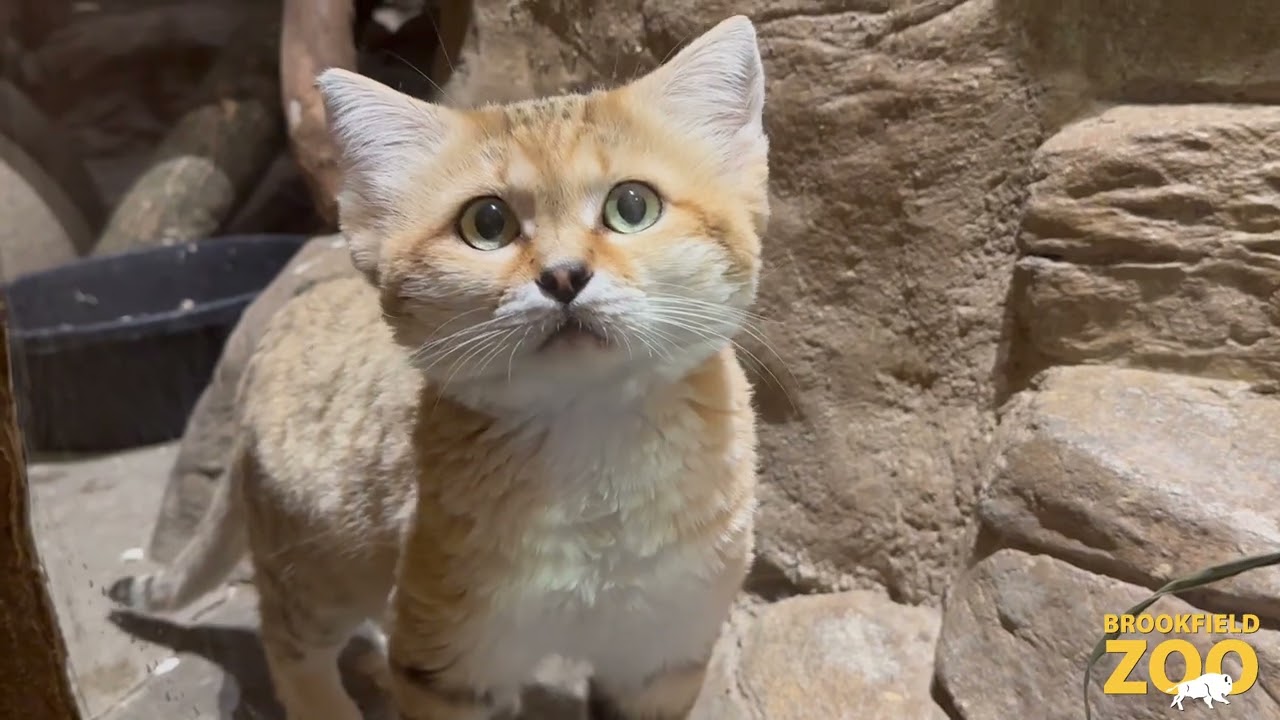Summary:
1. Introducing Solis, the new sand cat at Brookfield Zoo.
2. The unique habitat and adaptations of the sand cat.
3. The conservation efforts for sand cats in the wild.
4. How Brookfield Zoo is contributing to sand cat conservation.
5. Tips for visitors to interact with Solis and other animals at Desert’s Edge.
If you are a fan of all things feline, especially the wild cats of the desert, I have some exciting news for you! Brookfield Zoo has welcomed a new resident at Desert’s Edge – Solis, the stunning sand cat! This charismatic yet elusive creature has been settling into his new habitat and is ready to meet the curious visitors who seek to learn more about these unique desert dwellers. So, grab your binoculars and join me as we delve into the enchanting world of the New Sand Cat at Brookfield Zoo!
Sand cats, or Felis margarita as they are scientifically known, are small wild cats that inhabit the sandy deserts of North Africa and Southwest Asia. With their small, compact bodies and bushy tails, they are perfectly adapted to thrive in the extreme conditions of arid regions. Here are some fascinating facts about Solis and his sand cat counterparts that will surely captivate you:
1. Desert Adaptations: Sand cats have evolved impressive adaptations that allow them to survive in harsh desert environments. One of the most remarkable features is their dense fur, which insulates them from extreme hot and cold temperatures. Additionally, they have large, furry paws that help them maneuver effortlessly on loose sand, acting like natural snowshoes.
2. Superb Hunters: Sand cats are highly effective hunters despite their diminutive size. They primarily feed on small mammals like gerbils and rodents, abundant in their sandy habitats. With their incredible hearing and night vision, they can hunt with great precision, making them formidable predators in the desert.
3. Silent Stealth: Solis might look cute and cuddly, but don’t let that fool you into thinking he isn’t a skilled hunter. Sand cats are masters of stealth, employing silent stalking techniques to approach their prey without making a sound. Combined with their excellent camouflage, this ability makes it nearly impossible for their unsuspecting victims to detect their presence until it’s too late.
Now that we have explored the amazing adaptations and unique characteristics of our sand cat friend let’s shift our focus to the crucial topic of conservation. Sand cats are listed as near-threatened by the International Union for Conservation of Nature (IUCN) due to habitat degradation and loss and being hunted for their fur in some regions. However, organizations like Brookfield Zoo play a significant role in conserving these incredible creatures.
Brookfield Zoo actively participates in the Species Survival Plan (SSP) for sand cats, a collaborative effort among zoos and conservation organizations to maintain a healthy and genetically diverse population of these cats in captivity. By carefully managing breeding programs and sharing knowledge, zoos like Brookfield contribute to the long-term survival of sand cats.
Beyond captive breeding, Brookfield Zoo also supports field conservation efforts to protect sand cats in their native habitats. These initiatives include habitat restoration, monitoring populations, and raising awareness among local communities about preserving these remarkable creatures and their fragile desert ecosystems.
Now that you are as passionate about conserving sand cats as I am, you might wonder how to make a difference. When you visit Solis and his buddies at Brookfield Zoo’s Desert’s Edge, you support the zoo and contribute to the conservation efforts for sand cats and other endangered species. Here are some tips to enhance your visit and make it an enriching experience for both you and the animals:
1. Respect Their Space: When observing Solis or any animal at the zoo, it’s essential to maintain a respectful distance and follow any guidelines provided by staff. This ensures the animals’ well-being and allows them to behave naturally in their habitats.
2. Ask Questions: Don’t hesitate to approach the knowledgeable staff at Desert’s Edge and ask questions about Solis, sand cats, or any other animals you encounter. Learning more about these beautiful creatures will deepen your appreciation for their unique characteristics and inspire you to become a champion for their conservation.
3. Support Conservation Efforts: Consider joining conservation organizations or associations that protect wild cats and their habitats. By supporting these initiatives financially or through volunteering, you can directly contribute to preserving sand cats and other endangered species.
4. Share Your Experience: After visiting Solis and the other fascinating animals at Desert’s Edge, share your experience with friends, family and on social media. Raising awareness about the importance of conservation and the beauty of these creatures will inspire others to take action and help safeguard their future.
So, what are you waiting for? Plan your trip to Brookfield Zoo’s Desert’s Edge to meet Solis, the enchanting sand cat, and explore the world of desert wildlife. Witness the remarkable adaptations and learn how we can all contribute to the conservation of these extraordinary animals. Brookfield Zoo is not just a place to observe animals; it is a platform to ignite curiosity, inspire conservation, and awaken our love for the natural world. Start your adventure today, and let the magic of the New Sand Cat at Brookfield Zoo leave an indelible mark on your heart.
*****
Source Description
We’ve got a new resident at Desert’s Edge: Solis, the sand cat! This desert dweller has been settling into his new habitat and getting more comfortable exploring daily. Come on by to meet him on your next trip!
Visit www.czs.org for more information about Brookfield Zoo.


